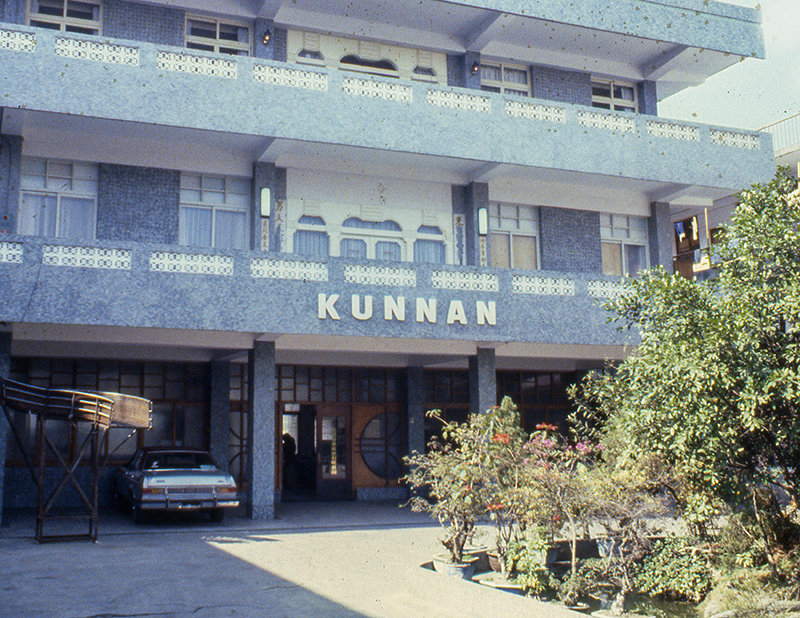|
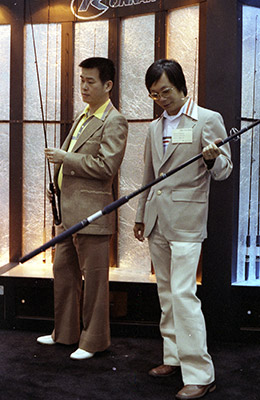
Kunnan Lo on the left
owner of Kennex and Kunnan Fishing Rod Company
Steven Hsieh on the right
Plant manager of the Kunnan fishing rod company.
This is at the 1980 AFTMA show.
|
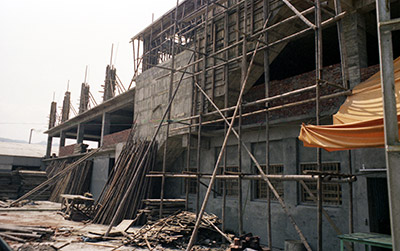
The building of the Kunnan Fishing Rod company |
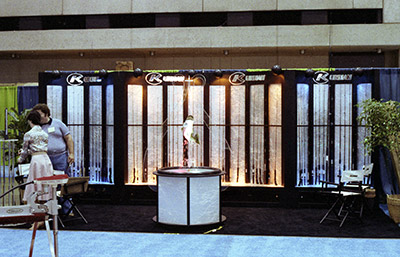
Booth at the AFTMA show 1980 |
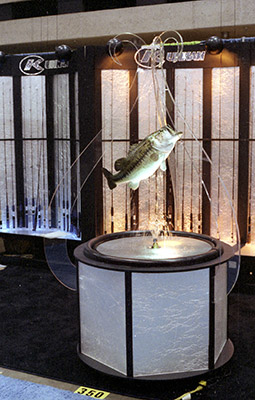
Booth at the AFTMA show 1980
|
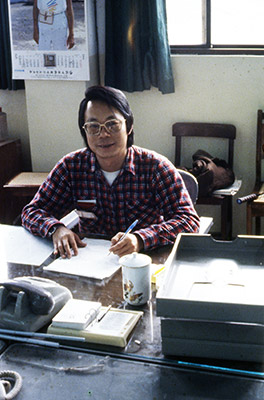
Steven Hsieh
Plant Manager |
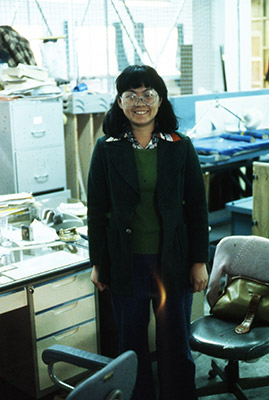
Abigail Wu
Asst. Plant Manager
|
|
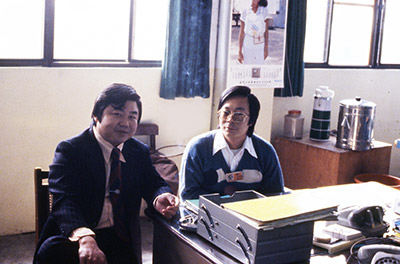
Walter Chen on the left
VP of Kunnan Enterprises
Steven Hsieh on the right
Plant Manager of Kunnan Fishing Rods
|
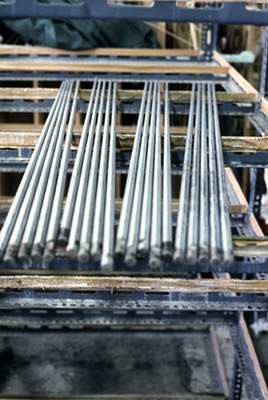
These are steel mandrels. A release agent is put
on them first and are let to dry. After the release
agent dries a tacking agent is put on to them.
|
|
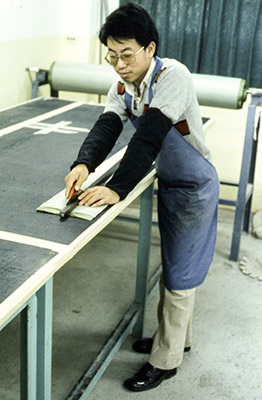
The material is cut into patterns that determines the
length and flexibility of the rod. The whole process of making a blank with an epoxy resin has to be in a
temperature controlled environment until the blank
is cured (hardened).
|
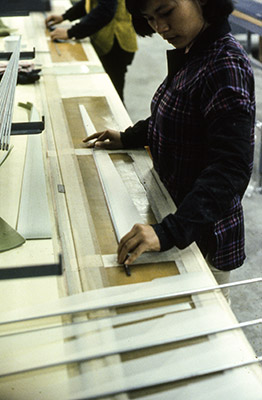
This is what we call tacking. The edge of the glass
cloth is being pressed against the mandrel and the
tacking agent holds it in place. |
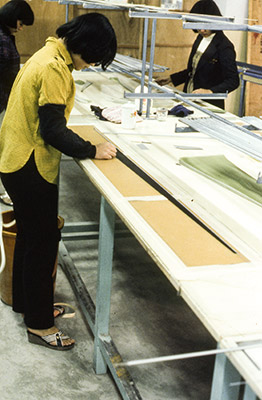
This is what we call tacking. The edge of the
graphite material is being pressed against the
mandrel and the tacking agent holds it in place.
|
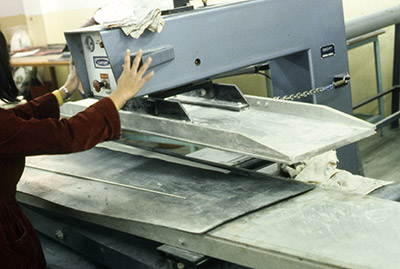
The material is carefully rolled onto the mandrel
by means of this rolling machine. The top platen
comes down on to the mandrel and it also
free to rotates and pivots in all directions. The
bottom platen starts the action of rolling by
moving inwards.
|
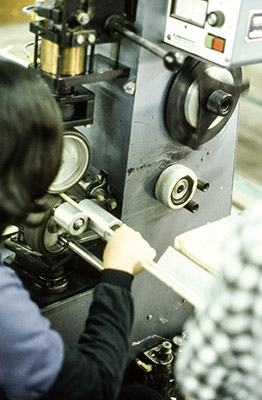
This is what we call a wrapping machine. 1/2" wide
or so of polypropylene film is spiralled wrapped under
tension onto the rolled blank. This then goes into
a oven. Polypropylene is used because the cured
epoxy resin will not stick to it. |
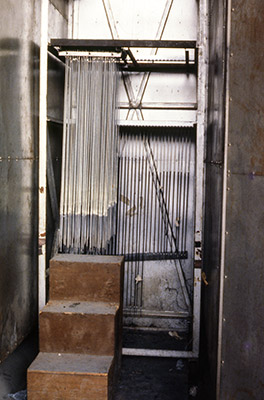
After the blanks have been spriralled wrapped
they are hung on a rack and rolled into an oven
to be cured. |
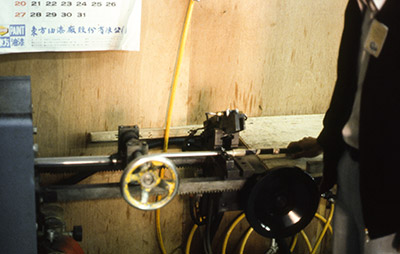
After the oven and the blank is cured, a mandrel puller
is used to pull the mandrel out from the blank. |
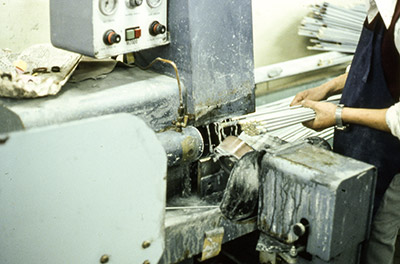
After the mandrel is pulled out of the blank, the poly
removing machine is used to take the poly of of the blank. |
|

Centerless grinding machine used to grind blank ends
to the proper dimensions for assembling handles .
|
I am sorry to say that I have not been able to find any
of the painting department pictures to show at this time.
I set up an electrostatic system for the painting but
have no idea if they continued to use that process. |
|
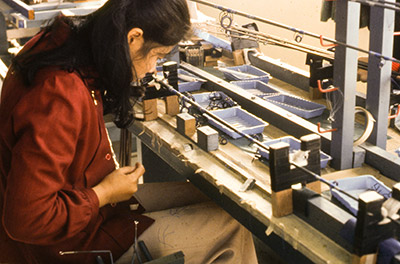
The guides are wrapped on using nylon thread.
|
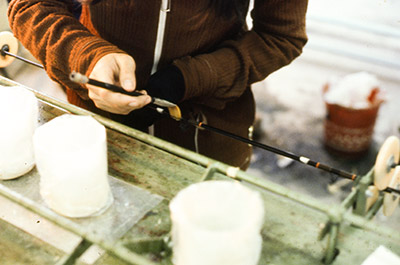
Here the person is applying a non yellowing clear
polyurethane finish on the nylon thread. It will
take a number of coats to get a good build up
of material. Conolon had an infrared finishing
machine where you could put a thick coat of finish
on the wrap and it would be pretty much dry by
the time it came out of the machine with no
sagging encountered.
|
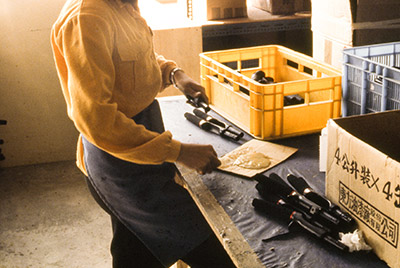
Assembling casting handle with epoxy.
|
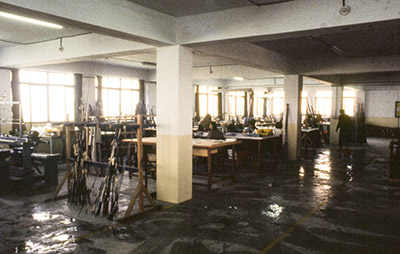
Assembly Department |
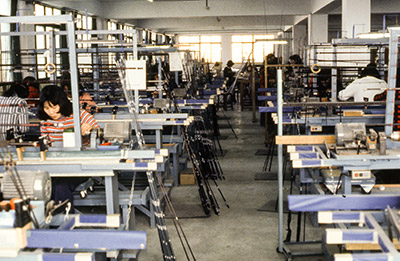
Guide Wrapping Department
|
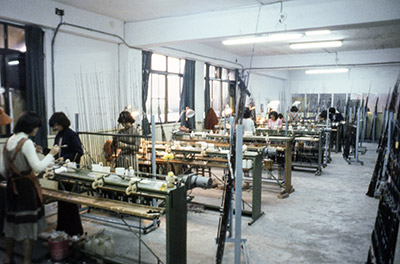
Guide Finishing Department |
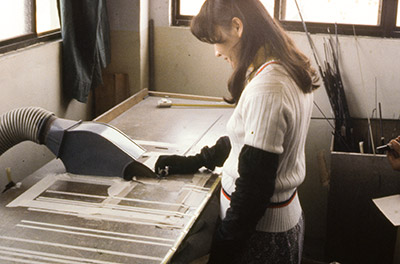
Cutting blank to length
|
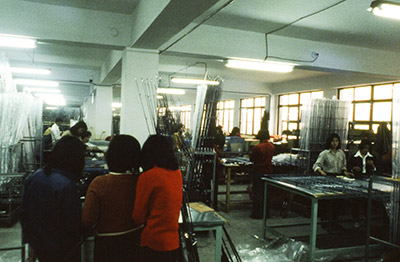
Inspection Department |
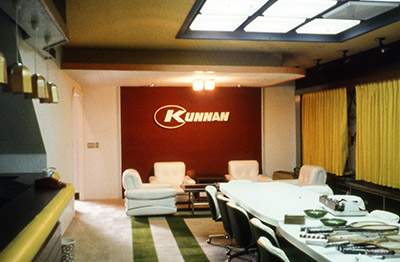
Corporate Board Room
|
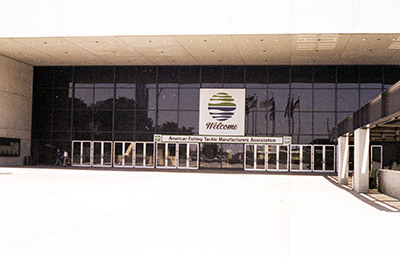
Convention center for the 1980 AFTMA show |
|
|
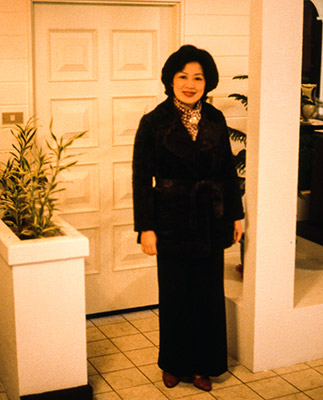
Mrs. Kunnan Lo
|
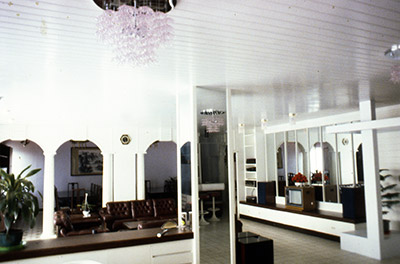
Mr. Lo's House 1 |

Mr. Lo's House 2
|
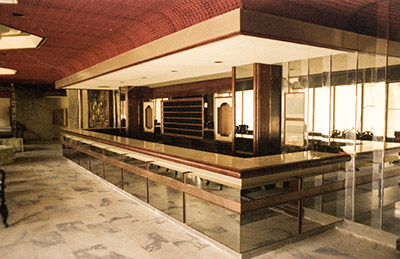
Bar in Mr. Lo's House |
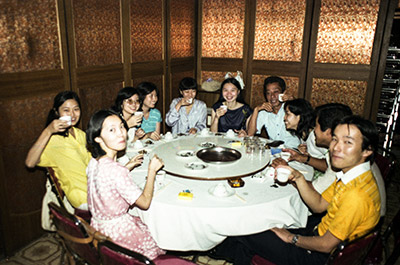
Kennex office staff with Fred Geenan from
Narmco materials |

You really learn how to hold it here until you
get back to the hotel.
|
|
|
|
|
